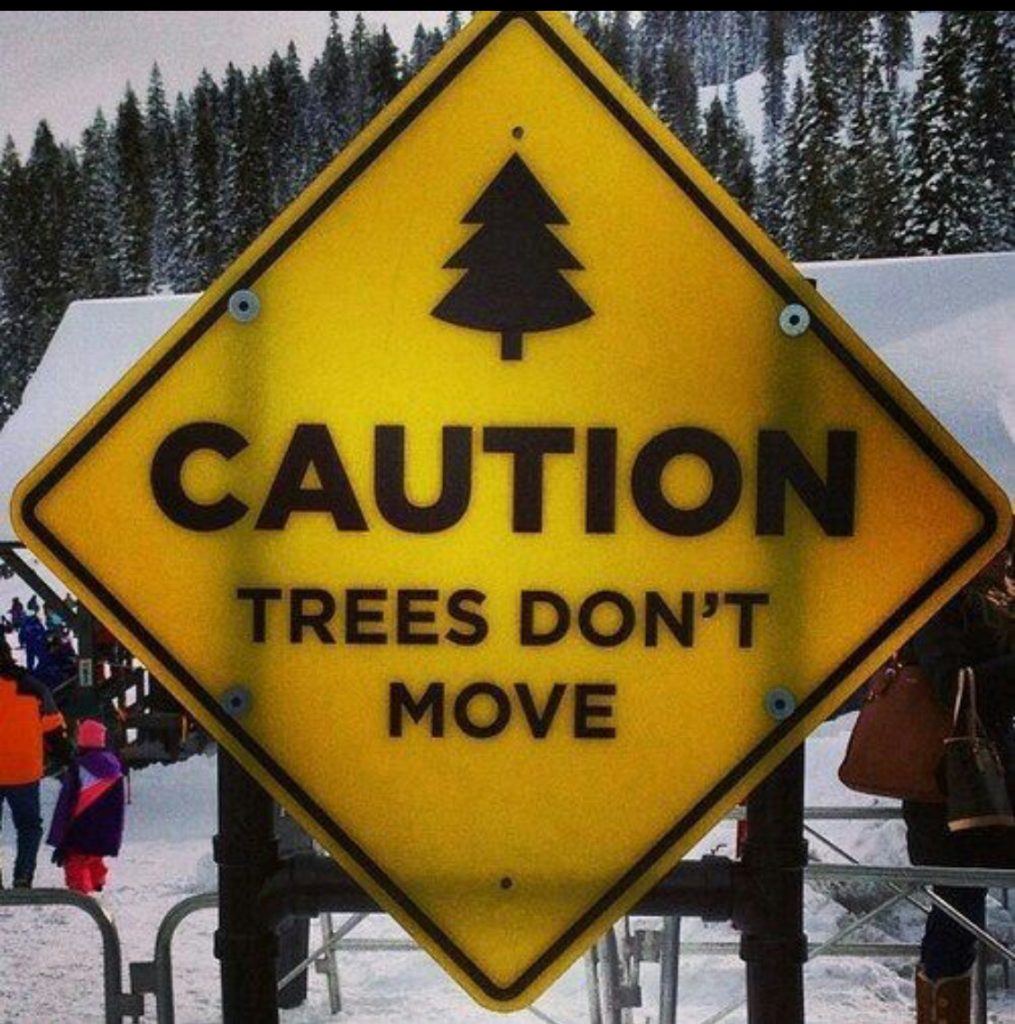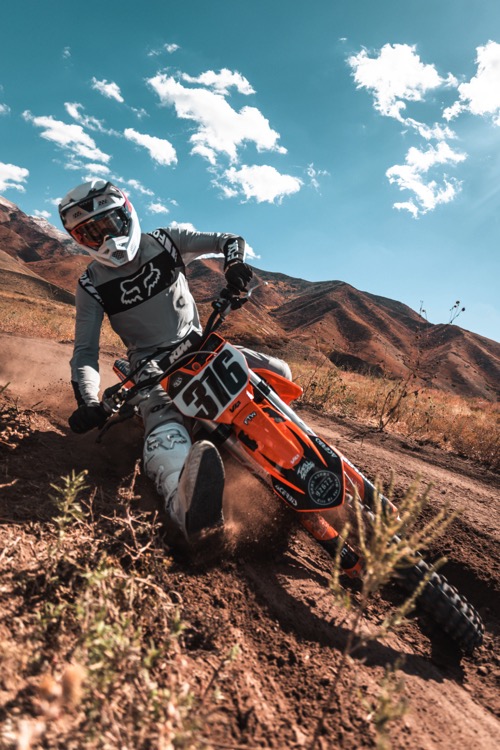Hill climbing is the first thing that will destroy your confidence on a dirt bike. Quickly it will become easy but then will come the bigger and more challenging hills with a step-up, root, turn or slippery patch right in the middle.
I think the longer I rode, Enduro in particular, the harder hills got. I never seemed to reach that point of complete confidence because, I guess, as I learnt I stepped up to harder courses and of course.. harder hills.
So what is the secret to being comfortable with hills? Well two things really, have a competition plan and an exit plan.

Get a plan!!!
What I mean by this is get a plan of how you are going to ride the hill, what you are going to do where and how you are going to get that to work with your body position. You need to know what you have in your skill bag and pick them out, like a restaurant menu , select a plate for each stage.
To give you an example: (A short sharp climb with a step-up in the middle and then a tight left turn just before the top, with the last part of the climb less steep but off camber, lots of places to get stuck!!!)
- I’ll start with a seat bounce, to compress the rear of the bike and get traction for a burst of acceleration before hitting the hill
- As I enter the hill I’ll move my weight forward on the bike keeping myself balanced on the pegs and my arms relatively relaxed.
- As I approach the step up, I’ll use the technique I’ve learnt to wheelie, little clutch slip, more throttle move my weight back again, lightening the front wheel so that it can bounce up the step-up
- Last thing I’ll do as I hit the step-up is move my body weight forward, sort of jumping so I take my weight off the bike (this is like jumping over the step-up and having the bike follow)
- As I crest over the step-up, I’ll be back forward on the bike, I’ll slip the clutch a little to stop the back wheel from losing traction as it bounces up, or the front launching too high.
- I’ll try to time it so my momentum (so important on a hill climb) almost runs out as I approach the sharp left turn and I can use that momentum and my body position to push my weight up over the bike to the uphill side and have all my weight on the downhill peg. I’ll turn the bike and use my uphill leg to push against the hill as a “dab” to help turn the front and keep me moving forward.
- Then back riding the left trail, slipping clutch, dabbing right foot and throttle to get traction, keep balance and keep traction in the off camber section, so all my weight on outside peg.
This is basically three or four skills that I know the body position for and the throttle/clutch et al. that I can put together as a sequence and think about as a plan just as I approach the hill. It doesn’t take long because a hill with a step-up will be the same plan most of the time, the extra sharp turn is not so uncommon so I really just pull out of my brain the combination that has worked in the past for this “type” of climb.
So those 3-4 techniques I have put together are:
- weight pegs for rapid acceleration (comes in handy many time when traction is at risk)
- log hop
- turn on an off camber hill.
- basic hill climb technique. (lets talk about that one some more).
So climbing hills, like a lot of off road things, is about combining techniques you have already learnt.
Where you’ll get caught out, or it should be, is where you encounter something you have not yet developed the skill for.
Take the time to get a a plan
Unfortunately, you will get caught out in simpler ways, but you’ll find that you pass it the second time. This is because, almost without exception, you just failed to have a plan. You’ll often see, even very experienced riders, pause for a moment at the bottom of a climb, whilst they make a plan!!!! So take the time, make sure you have a plan and remember when it works out the way you want it to put it into your catalogue of tools.
Right, the basic skill of hill climbs, you know the ones where its just a hill… none of this flash stuff, just vertically challenged, traction challenged and long enough for you to run out of momentum.
Momentum!!!

This is the first thing you need, enough momentum. In a straight climb your goal should be to get enough momentum that you can get to the top of the climb without needing to accelerate on the hill at all. Let me repeat that, with the extreme example , which you’ll use on smaller climbs, you want to arrive at the bottom of the hill with enough momentum that you can COAST up the the hill running out of momentum as you crest. Traction will not be a problem if you have enough momentum.
The reason for this is traction. It’s simple if your bike weighs 100Kg and you are at a dead stop on a vertical hill you’ll need to lift nearly 100kgs on a small contact patch where the tyre connects to the ground.
The same vertical hill hit at a speed that means that the tyre is rotating, say twice a second, you’ll have the entire circumference of the tyre X 2 per second to grip the ground and lift 100kg or possibly meaning the same patch of rubber knobs will only have to hold 5Kg at a moment. Quite a lot of difference…. a little momentum can generate.
But too much will cause you issues, so learn how to generate enough to get you there.
Deflection
Deflection is the next big stop for hill climbing. This is where the bike hits a bump on the hill and deflects causing you to loose balance, which causes you to shut off the throttle, lose momentum and …. BAM, you’re struggling for traction and stopped on the hill.
To cope with deflection, keep your body weight neutral and balanced; allow the bike to move under you and therefore keep your balance. Momentum is key and holding onto your balance is the way to keep momentum. Trust me, the moment you lose it, you’ll shut it (throttle).
Good body position has you forward, vertical over the pegs, not using your arms to hold you on the bike, not having to weight the rear wheel for traction (because you have enough momentum) and if the bike kicks up (which it will do) you can allow it to move without affecting your balance.
I guarantee, if you think about the last few hills you failed to climb, you’ll find your weight was back, dependent on the handlebars to keep you up right. And when the front deflected, most likely in an upwards direction, you were out of balance, correcting the throttle to get it back and dropped below a viable momentum level… now you’re struggling for traction and its down hill from there, literally.
Vision
Look where you want to finish. Too many riders look at the first thing on the hill that worries them rather than the top of the hill. Many a rider has taken the advice, “Just keep your eyes on the top” to succeed at hill climbing.
Trust me if you want to make it to the top , make focus on the top the first priority. That’s not to say you don’t look at the step-up and prepare for it, but make sure it doesn’t take all your attention or that will be where you stop.
Look where you want to go.
So in summary;
- Get enough momentum (you’ll notice in my hill climb the first thing I did was a seat bounce to get traction for the acceleration into the climb).
- Stay balanced. Don’t hang off the bars, stay above the pegs and only leverage the bars to get the control over the weighting on the bike you need, not to hold your balance.
- Make sure you are aiming (looking) for the top.
Failing gracefully
So if you are going to become good at hill climbs, you need to practice and practice on hills you are not always going to get to the top of. So one way or another you better learn how to fail gracefully, i.e. not sliding backwards down the hill until you and the bike are tumbling back to the base of the hill!!!!
MOMENTUM… this is the key. At some point you’ll loose the momentum you need to maintain your climb. On a shallow climb you’ll be able to come to a stop and keep going with good clutch and throttle control… but on steeper climbs if you run out of the momentum you need, well, your going to stop and shortly after that gravity will win and you’ll be heading down again.
So the key is to learn when you are about to run out of momentum and at that point put your bike into the most stable position you can, which is side onto the hill with your downhill foot on the peg and your uphill foot on the hill. Stopped. If need be, with the handlebar jammed into the ground on the upside.
From here you can slide your front wheel down, so it’s pointing down again and ride down the hill. You do this, BTW, by twisting the bars back and forward to slip the front wheel downhill until you are able to ride down again.
The key to this is the understanding of momentum. Turning into a stable, across the hill position is not hard as long as you can plan for it and planning for it is about knowing in advance you are about to run out of momentum.
So pay attention and get practiced at stopping on the side of a hill!!! Trust me, it’ll make you look like a complete pro.



